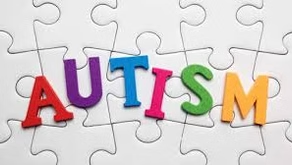DHS: 'Illinois has average of a 9-month to 2-yr waitlist for [ASD] diagnostic services'
- The end of childhood

- May 3
- 3 min read
May 1, 2025, Chicago Reporter: The Waiting Game: Illinois Families Face Years-Long Delays for Autism Diagnoses
At nine months old, Kaylah Boyd’s son showed signs of being different. By his first birthday in July 2020, she was actively seeking an evaluation. What followed was a journey that would span years – a story that exemplifies the crisis facing thousands of Illinois families seeking autism diagnoses for their children.
“After age 3, you’re pretty much on your own,” says Correy Boyd-Bell, describing the family’s struggle to navigate a fragmented system. It would take one year to secure an appointment and another year to obtain a diagnosis.
The Early Signs
When Boyd first sought help, she encountered her first roadblock: medical providers typically won’t diagnose autism before age two. Instead, they suggested early intervention services for children ages 1-3.
The family cobbled together a support system: weekly visits from therapists providing speech, cognitive behavioral, ABA, and occupational therapy. Their pre-K school worked with him in half-day sessions until age three. But then came the void.
The pathways to essential resources remain hidden in shadow. “I turned to social media, reaching out to my network for help. Responses came from mothers of autistic children, teachers, and ABA therapy professionals”, Boyd-Bell says – a sacred circle of community wisdom rising up what official systems failed to provide.
The Numbers Behind the Crisis
According to the CDC’s latest data, autism rates have climbed to 1 in 31 children nationwide. In Illinois, the situation is particularly challenging. “Illinois has an average of a 9-month to 2-year wait list across the entire state for diagnostic services,” according to the Department of Human Services.
For six months, the Boyd family visited every center within a 15-mile radius. “They either only took private insurance or they didn’t have space, with waitlists of a year or more,” Boyd-Bell recalls.
The Insurance Divide
The crisis creates a two-tiered system. Under Illinois law, insurance providers must cover ABA therapy for individuals diagnosed with autism up to age 21. However, getting that initial diagnosis remains a major hurdle.
For Medicaid families, the situation is even more challenging. “Waitlists are years long for diagnostic and therapeutic services, especially for children using Medicaid insurance plans,” states Illinois’s 2024 Annual Autism Report.
Geographic and Cultural Barriers
A Chicago Reporter analysis reveals stark disparities:
Cook County: 1 autism diagnostic specialist per 12,000 children
Collar counties: 1 specialist per 18,000 children
Downstate regions: 1 specialist per 47,000 children
For immigrant families and non-English speakers, the challenges multiply. “Due to a shortage of developmental specialists and geographic inequities, wait times for autism evaluations are particularly long in rural areas,” confirms Dr. Elizabeth Parker of the Illinois Rural Health Institute.
Finding Solutions
The Boyd family eventually secured their diagnosis through an unexpected channel: Social Security. After applying for benefits, they were sent to a doctor for evaluation, which helped release social security benefits. This path, while successful for them, isn’t widely known or accessible to all families.
Some promising initiatives are emerging:
The Reduce the Wait Project: “Northwestern University’s RTW project aims to provide autism evaluations to over 1,000 children enrolled in the Illinois Early Intervention program,” using a combination of virtual and in-person assessments.
Legislative Action: A new Illinois House Bill (HB2428) proposes increased reimbursement rates for autism diagnostic services starting January 2026.
Telehealth Expansion: “Virtual evaluations can work for some families,” though access to technology remains a barrier for many.
The Path Forward
“The vision of the Autism Task Force is that in Illinois, people with autism and their families will be able to readily access an array of effective services,” states the latest strategic plan. But for families like the Boyds, change can’t come soon enough.
“We were lucky,” Boyd-Bell reflects. “We had resources, we had a network, and we still struggled. What about the families who don’t have these advantages?”
The answer to that question may determine the future for thousands of Illinois children awaiting diagnosis and treatment.





Comments